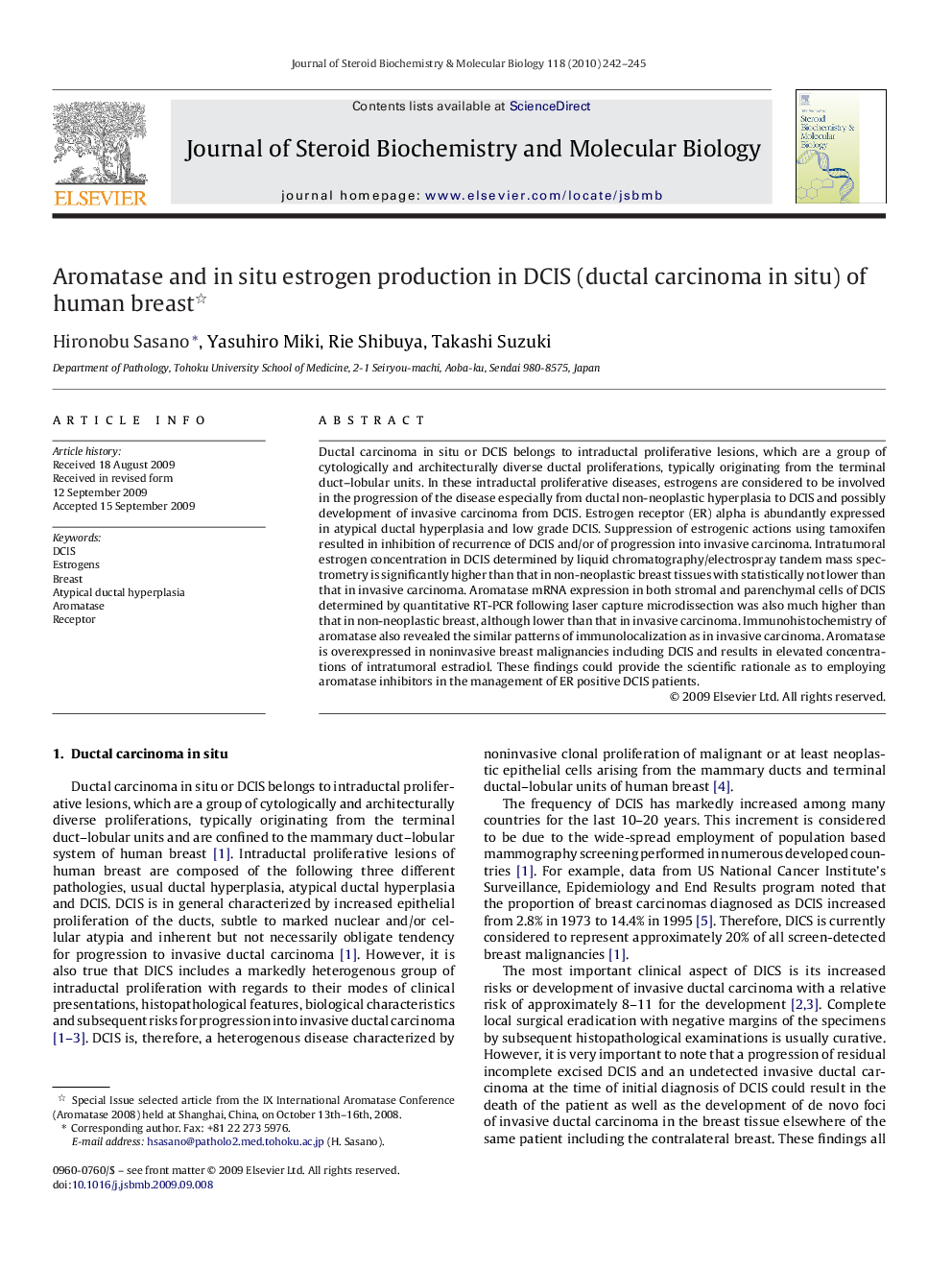| Article ID | Journal | Published Year | Pages | File Type |
|---|---|---|---|---|
| 1992115 | The Journal of Steroid Biochemistry and Molecular Biology | 2010 | 4 Pages |
Ductal carcinoma in situ or DCIS belongs to intraductal proliferative lesions, which are a group of cytologically and architecturally diverse ductal proliferations, typically originating from the terminal duct–lobular units. In these intraductal proliferative diseases, estrogens are considered to be involved in the progression of the disease especially from ductal non-neoplastic hyperplasia to DCIS and possibly development of invasive carcinoma from DCIS. Estrogen receptor (ER) alpha is abundantly expressed in atypical ductal hyperplasia and low grade DCIS. Suppression of estrogenic actions using tamoxifen resulted in inhibition of recurrence of DCIS and/or of progression into invasive carcinoma. Intratumoral estrogen concentration in DCIS determined by liquid chromatography/electrospray tandem mass spectrometry is significantly higher than that in non-neoplastic breast tissues with statistically not lower than that in invasive carcinoma. Aromatase mRNA expression in both stromal and parenchymal cells of DCIS determined by quantitative RT-PCR following laser capture microdissection was also much higher than that in non-neoplastic breast, although lower than that in invasive carcinoma. Immunohistochemistry of aromatase also revealed the similar patterns of immunolocalization as in invasive carcinoma. Aromatase is overexpressed in noninvasive breast malignancies including DCIS and results in elevated concentrations of intratumoral estradiol. These findings could provide the scientific rationale as to employing aromatase inhibitors in the management of ER positive DCIS patients.
